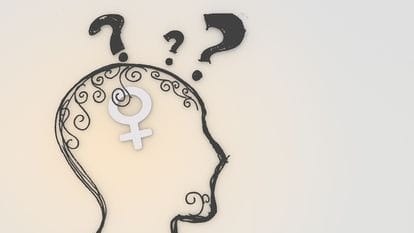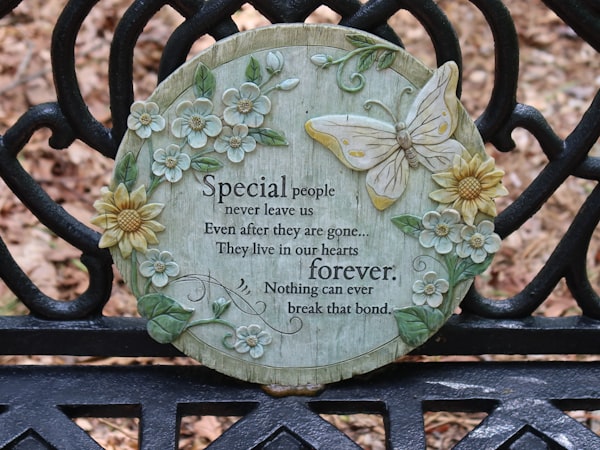Solutions for Dementia Vision Problems
Dementia can cause a variety of visual problems, including hallucinations, illusions, misperceptions, and misidentifications. Learn about solutions such as eye care, environmental adaptations, and color changes that can help improve visual health for those with dementia.

The Solutions for dementia vision problems will vary depending on the “type” of visual mistakes a person is experiencing.
The types of “visual” mistakes would be :
Hallucinations – Once thought that hallucinations were common, new research has determined there are other ‘visual” mistakes that were often thought to be hallucinations. There are genuine hallucinations that can be caused in the elderly when they develop an infection – a urinary tract infection, pneumonia etc. An adverse reaction to a medication can also cause hallucinations.
Illusions – This is a perception problem that results in a “distortion of reality”. Simply put, there is a visual distortion of some physical object or characteristic. This could be a shiny floor, a reflection in a mirror, or problem with seeing contrasting colors.
An example may be, seeing a shiny floor and thinking it is wet or water.
Visual Misperceptions -This is an inaccurate or distorted process of visual information. Visual misperceptions can be influenced by factors such previous experiences and expectations.
An example: Taking a walk down a long, dark hallway with benches along the wall may be perceived by a person with dementia as she is at the train station she used to take to go to work.
Visual Misperceptions of illusions – This occurs when a person already is seeing things incorrectly, and experiences seeing things even more distorted . This is expected to be caused by an already damaged visual system.
An example: Entering in a room with several mirrors in it, a person with dementia may see themselves as a group of intruders, and cause fear.
Misidentifications (Also known as Agnosias) – This is the inability to correctly identify people and/or objects.
An example: A person with dementia sees a statue of a dog and thinks it is real, and insists on feeding it. Some have the inability to distinguish a wife, from a daughter or granddaughter.
The wife with severe confusion carries a baby doll around and believes she is caring for her young baby. She insists that everyone must be quiet, so as not to wake up the baby.
Solutions for Dementia Vision Problems
It is important to pay attention to eye care and visual health. This includes making sure glasses are worn and clean. To make sure that the prescription is correct, arrange for regular eye check ups.
Wearing glasses can improve the sharpness or visual acuity of what is being seen. Glasses will not correct some visual problems caused by damage to the area of the brain responsible for vision.
If cataracts are present, this can dramatically affect vision. Discuss with your physician if this should be addressed and treated.
There are environmental adaptations you can make to help the person with dementia.
Environmental Solutions for a person with dementia
Improved lighting has been found to be help in preventing falls, it also can decrease the occurrence of visual hallucinations
Deliberate use of color can also help a great deal. A research study with people in the advanced stages of Alzheimer’s dementia showed that changing the color of the dishes and cups to bright read actually resulted in a 25 % increase in food intake. It also resulted in an 84 % increase in fluid intake.
Painting the door to the bathroom in a bright color can help someone with dementia find the toilet independently.
A high contrast toilet seat, meaning one that stand out from the colors of the room and toilet fixtures can make it easier to locate them. A bathroom that has all the colors the same, blends in and causes some with dementia to not be able to see the individual fixtures.
When having handrails placed in the bathroom, choose extra longs ones, so the person with dementia , if a person needs handrails choose extra-long ones. This is so that they are as conspicuous as possible , so they are not expected to turn their head to look for the railing.
More Solutions for Dementia Vision Problems…
Make sure all rooms have good lighting. Some with dementia may avoid dark areas in rooms.
Eliminate shadows, with good lighting.
Be aware that busy floor or wall coverings can cause confusion. When possible minimize those busy patterns.
If possible use non-shiny, light-colored flooring. It will reflect light upwards and enhance the overall ambient light levels in the room. If these floors become a problem, try to replace and/or remove mirrors and shiny surfaces.
Use signs to highlight important objects and to use as a visual cues, such as STOP signs, pictures on cabinets that show what is in the cupboard or drawers.
Camouflage objects, such as light switches or doors, that you do not want to the person with dementia shouldn’t use.
Making specific changes to help visual functions can improve the quality of life for the person with dementia.
DEMENTIA AND VISION LOSS: Understanding the Connection
Discover the Link Between Dementia and Vision Loss
If you have a friend with dementia, you may have noticed that they sometimes mistake objects for something else or have trouble with their vision. While dementia can cause these visual errors, there may be something more going on. Researchers have found a connection between certain forms of dementia and vision loss.
Understanding the Impact on Vision
Vision loss in older adults can be attributed to various eye conditions and health issues. However, when it comes to dementia, the changes in vision are not solely related to the eyes themselves. Dementia affects the parts of the brain that interpret visual input. This means that someone with dementia may have visual problems despite having healthy eyes. Different types of dementia can impact the visual system in different ways.
Challenges Associated with Dementia and Vision Loss
If a person has dementia, they may struggle with distinguishing colors, shifting their focus, describing what they see, or detecting movement. They may even mistake images on TV for real people. The visually over-stimulating environment can lead to restlessness and agitation, especially if there are bright lights or busy patterns.
Understanding Visuoperceptual Difficulties
The process of seeing involves many stages, including the interpretation of visual information. Problems with both vision and perception are referred to as "visuoperceptual difficulties." These difficulties can lead to misperceptions and misidentifications, where someone sees one thing but interprets it as something else or struggles to identify specific objects and people.
Addressing Vision Changes Without Dementia
It's important to note that not all vision changes are caused by dementia. In some cases, people without dementia may experience Charles Bonnet Syndrome, which causes hallucinations due to changes in vision. However, this syndrome is not a form of dementia and can often fade over time. It's crucial for individuals experiencing visual hallucinations to consult with a healthcare professional to rule out other causes.
The Impact of Dementia and Vision Loss
When someone has both dementia and vision loss, it can lead to increased disorientation, mobility issues, and a higher risk of falls. Communication challenges and difficulty learning new tasks may also arise. Additionally, the combination of dementia and vision loss can make it harder to use adaptive techniques or tools for memory and communication.
Strategies for Those with Dementia and Vision Loss
To support individuals with both dementia and vision loss, focus on their abilities and develop strategies based on what they are already familiar with. Regular eye exams are essential for managing eye diseases, and adaptations can be made during these exams to accommodate someone with dementia. This includes slowing down, ensuring clear understanding, incorporating family members into the process, and allowing extra time for the exam.
Conclusion: Seeking Clarity for Dementia and Vision Loss
Understanding the connection between dementia and vision changes is crucial to provide better support for individuals experiencing these challenges. By recognizing the impact on vision and implementing appropriate strategies, we can help improve the quality of life for those affected by both dementia and vision loss. Don't hesitate to seek professional help and stay proactive in managing eye health.



